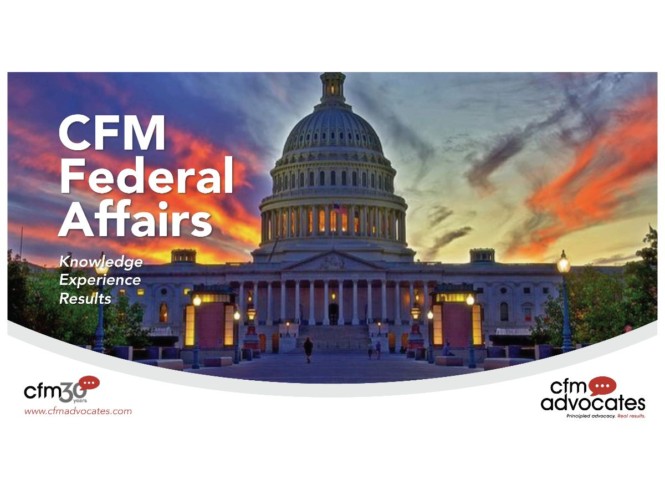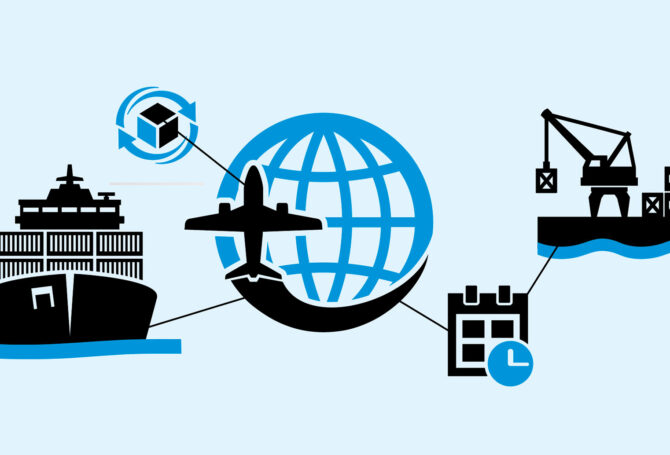
Committee Chair Says China Poses Threat to U.S. Security
Amid partisan sparring in the House, there is solid bipartisan support for formation of a new committee focused on China. The resolution to form the Select Committee on Strategic Competition Between the United States and the Chinese Communist Party passed by a vote of 365-65.
“One of the greatest worries about the future is that we fall behind Communist China,” House Speaker Kevin McCarthy says. “We spent decades passing policies that welcomed China into the global system. In return, China has exported oppression, aggression, anti-Americanism.”
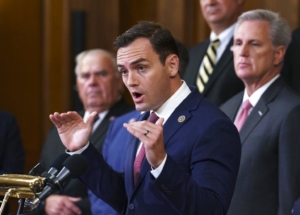
Congressman Mike Gallagher will chair the new select committee on China.
Congressman Mike Gallagher, R-Wisconsin, will chair the 16-member committee that will include seven Democrats. The committee will be authorized to conduct far-ranging investigations and make policy recommendations. It won’t have the ability to move legislation. Gallagher is entering his fourth term after serving seven years on active duty as a U.S. Marine with two deployments in Iraq and earning advance degrees in strategic intelligence and international relations at Georgetown University. He also served as the lead Republican staffer for the Middle East and Counterterrorism on the Senate Foreign Relations Committee.
Gallagher believes China poses a greater economic and military challenge than the Soviet Union at the height of its power. “The threat posed by the Chinese Communist Party is not abstract and not limited to Taiwan, Hong Kong and human-rights violations within the country’s Xinjiang province, home to Uighyurs, he says. “China’s Communist Party has stolen American intellectual property, technology and industrial capacity, undermining our economy and good-paying jobs,”
While stressing the importance of bipartisan oversight, Gallagher accused China of a “whole-of-society strategy to undermine American leadership and American sovereignty while working on a bipartisan basis and with committees of jurisdiction.”
“We spent decades passing policies that welcomed China into the global system. In return, China has exported oppression, aggression, anti-Americanism.”
Democratic Congressman Jim McGovern of Massachusetts supports creation of the select committee, but warns “many of us have concerns about this turning into a committee that focuses on pushing Republican conspiracy theories and partisan talking points. We certainly don’t want it to turn into a place that perpetuates anti-Asian hate.” McCarthy reportedly provided assurances to Democrats that wouldn’t happen.
President Biden has called China an “existential threat” to the United States, retained trade tariffs imposed under President Trump and rekindled U.S. interest in Pacific Rim economic and security cooperation.
According to Gallagher, the committee will consider recommendations from a 2020 China Task Force report led by Congressman Michael McCaul, R-Texas, which McCarthy authorized as House minority leader. The report contains recommendations dealing with supply chains, energy, competitiveness and technology as well as ideological competition and national security.
The report asserts China “is undermining the core principles of the international system and putting American safety and prosperity at risk. Leniency and accommodation of the Chinese Communist Party and its oppressive agenda is no longer an option.”
US-Chinese Chronology
Mao Zedong and the Chinese Communist Party took control of China in 1949 after defeating Chiang Kai-shek and the Chinese Nationalist Party, whose leaders fled to Taiwan and imposed the Republic of China with tacit U.S. approval. President Eisenhower lifted a U.S. Navy blockade in 1953, enabling Chiang to send troops to Quemoy and Matsu in the Taiwan Strait. China responded by shelling the islands. Less than a decade after Hiroshima, the United States threatened a nuclear attack on the Chinese mainland. In October 1964, China conducted its first test of an atomic bomb. China amassed troops at its border with Vietnam as fighting in its southern neighbor intensified.
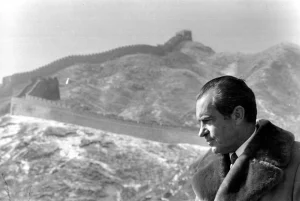
President Nixon at the Great Wall of China on his history visit.
Ping-pong diplomacy in 1971 saw the first Americans enter China legally since 1949. Shortly afterward, Secretary of State Henry Kissinger made a secret trip to China, China was recognized by the United Nations and given a permanent seat on the National Security Council. President Nixon visited China in 1972 and signed the Shanghai Communique as a basis for beginning U.S.-Sino negotiations.
The United States and China normalized diplomatic relations in 1978 during President Carter’s tenure. The recognition of the People’s Republic of China acknowledged the principle of one China and led to severing diplomatic ties with Taiwan. Congress enacted the Taiwan Relations Act the same year, which provided a basis for selling the Taiwanese arms.
President Reagan, who visited China, reaffirmed the U.S. One China policy while also pledging to continue to supply arms to Taiwan. On a visit to China in 1984, Reagan agreed to sell U.S. military equipment to China in light of mutual concerns about Soviet Union expansionism. The United States suspended selling arms to China in protest its military response to large democracy demonstrations at Beijing’s Tiananmen Square.
President Clinton attempted a policy of constructive engagement with China as it attempted to win the bid to host the 2000 Olympic Games, which instead were awarded to Australia. Clinton was able to secure the release of Tiananmen Square protestor Wang Dan, whom Beijing deported to the United States.
Taiwan held its first presidential election in 1996, electing a pro-independence candidate, Lee Teng-hui. China launched missile tests in an unsuccessful attempt to sway Taiwanese voters. China recalled its US ambassador after Clinton permitted Lee to visit the United States. Before the year ended, normal relations between the U.S. and China were resumed.
Clinton signed the U.S.-China Relations Act of 2000 that granted permanent normal trade relations and enabled China to join the World Trade Organization (WTO). Trade between the United States and China grow from $5 billion in 1980 to $231 billion in 2004. By 2006, China eclipsed Mexico as the second largest U.S. trading partner behind Canada.
In 2005, Deputy Secretary of State Robert Zoellick initiated what was called a strategic dialogue with China as an emerging international power to use its influence with Iran and North Korea. Later in the year, North Korea walked away from talks aimed at curbing its nuclear ambitions.
In 2007, China announced an 18 percent increase in defense spending. On an Asian tour in 2007, Vice President Dick Cheney said China’s military build-up exceeded its goal of “peaceful rise”. By 2008, China surpassed Japan as the world’s largest bondholder of U.S. debt. Two years later, China emerged as the world’s second largest economy, with a trajectory of overtaking the United States as early as 2027.
Secretary of State Hillary Clinton wrote an essay for Foreign Policy in late 2011 calling for a U.S. pivot to the Asia-Pacific region to counter China’s growing influence. President Obama announced the United States and eight Pacific Rim nations had agreed on a multinational free trade agreement called the Trans-Pacific Partnership. Separately, Obama ordered the deployment of 2,500 U.S. marines in Australia.
U.S.-China Trade Deficit Balloons
The U.S. trade deficit with China rose to all-time high of $295.5 billion in 2011, coinciding with a multi-nation filing to the WTO seeking consultation over China’s unwillingness to export rare earth metals, which are essential to semiconductor and battery production.
Xi Jinping became president of China and the leader of the Chinese Communist Party in 2012 on a pledge to “rejuvenate” China. Obama and Xi met in California in 2013 to establish personal rapport and a new model for the bilateral relationship between two global powers. The relationship was jarred a year leader when five Chinese hackers were indicted in a U.S. court, but rebounded in late 2014 with a joint climate announcement that contained promises to curtail carbon emissions before the Paris Accord was reached in late 2015.
Amid concerns over China’s militarization of the South China Sea, President Trump reaffirms the One China policy in 2017, but questioned the policy in a phone call to Taiwan’s president. Trump hosted Xi at Mar-a-Lago and promoted a 10-part trade agreement to expand U.S. exports to China. A year later, Trump slapped tariffs on Chinese imports in retaliation for continued theft by Chinese businesses of U.S. intellectual property. As 2018 wore on, the trade war worsened as China imposed its own tariffs on U.S. exports. Vice President Mike Pence delivered a speech warning of China’s “economic aggression.”
The U.S.-China trade war continued, with President Trump branding China as a “currency manipulator” in 2019 and signing the Hong Kong Human Rights and Democracy Act, which passed with bipartisan majorities in Congress. A break in the trade war occurred in 2020 when China agreed to buy an additional $200 billion worth of U.S. exports. The agreement didn’t address China subsidies to target industries.
Escalating Trade War
The coronavirus outbreak led to finger-pointing, including Trump’s repeated reference to the “China flu”. China also expelled 13 journalists from leading U.S. news media. The United States and China closed their respective consulates as tensions escalated in mid-2020. Secretary of State Mike Pompeo declared engagement had failed in U.S.-China relations. A top U.S. intelligence official called China the “greatest threat to America”. The U.S. Commerce Department added dozens of Chinese companies to its trade blacklist. As one of its last acts, the Trump administration designated Chinese abuses of Uyghurs as “genocide”.
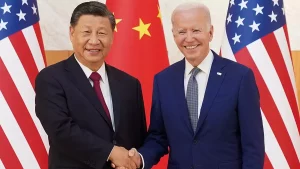
President Xi an President Biden have tried to maintain a relationship with guardrails to avoid conflict as both leaders eye the other warily and as a major competitor.
In his first speech to Congress in 2021, President Biden stresses the importance of boosting investment in U.S. technology and infrastructure to compete with China. At the urging of the United States, NATO declared China a “security challenge”. Later in the year, the United States and China agreed to a joint statement to work cooperatively to reduce carbon emissions, promote renewable energy and advance technologies such as carbon capture. Biden and Xi also discuss “guardrails” to avoid conflict as they aired their respective grievances over human rights and Taiwan. Biden imposes a diplomatic boycott of the 2022 Winter Olympics in China, while pressing Xi to avoid helping Russia with its invasion of Ukraine.
Biden and Xi met in person in Indonesia in an effort to repair relations after China conducted live military drills near Taiwan to protest a high-visibility visit by Speaker Nancy Pelosi and Biden imposed sweeping restrictions on the export of advanced U.S. semiconductors. China said the restrictions “will only hurt and isolate” America. Congress passed the CHIPS Act, which provides funding to bolster domestic computer chip production and research.
[Summary of U.S.-Chinese relations based on a Council of Foreign Relations backgrounder.]
